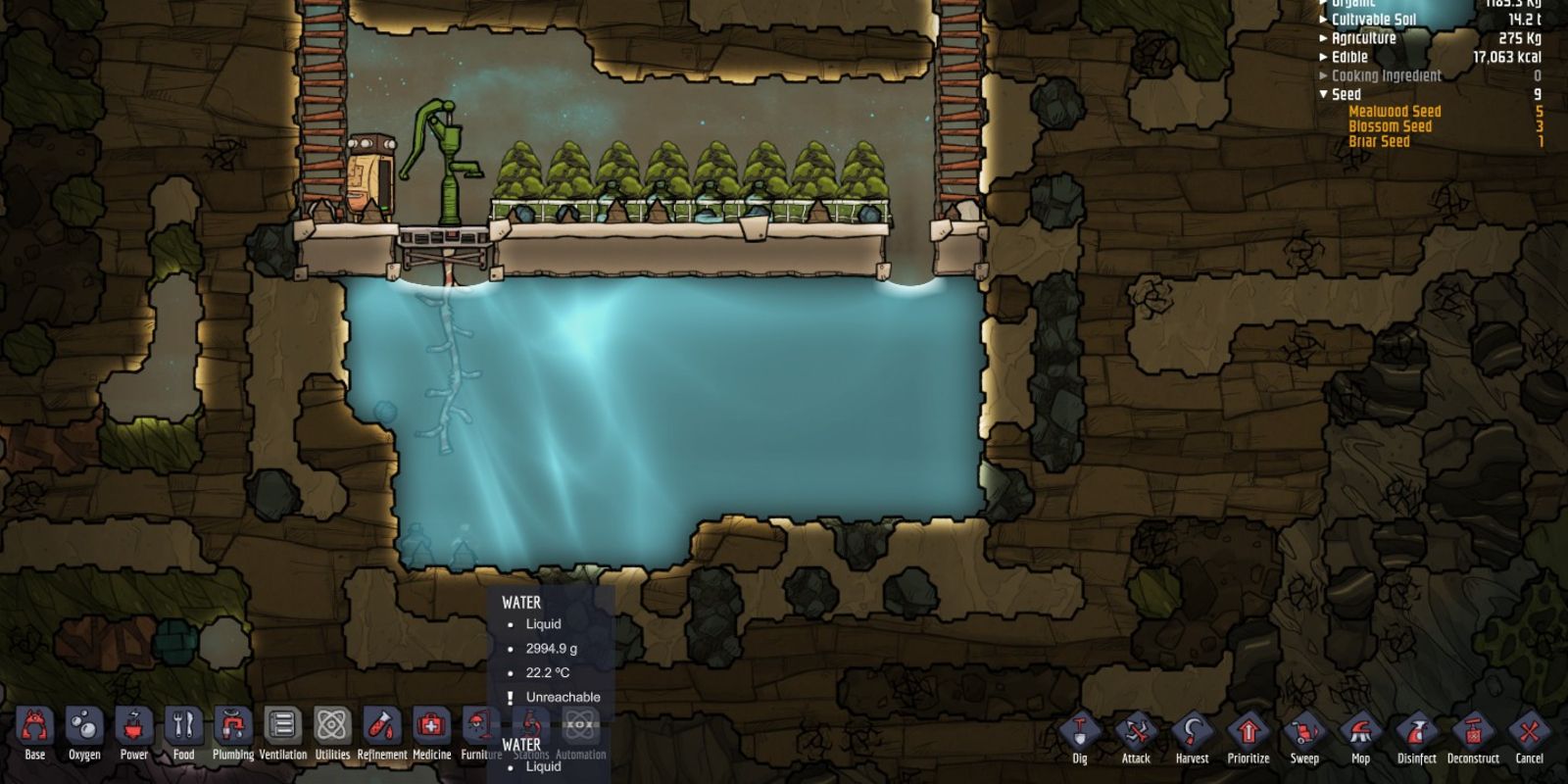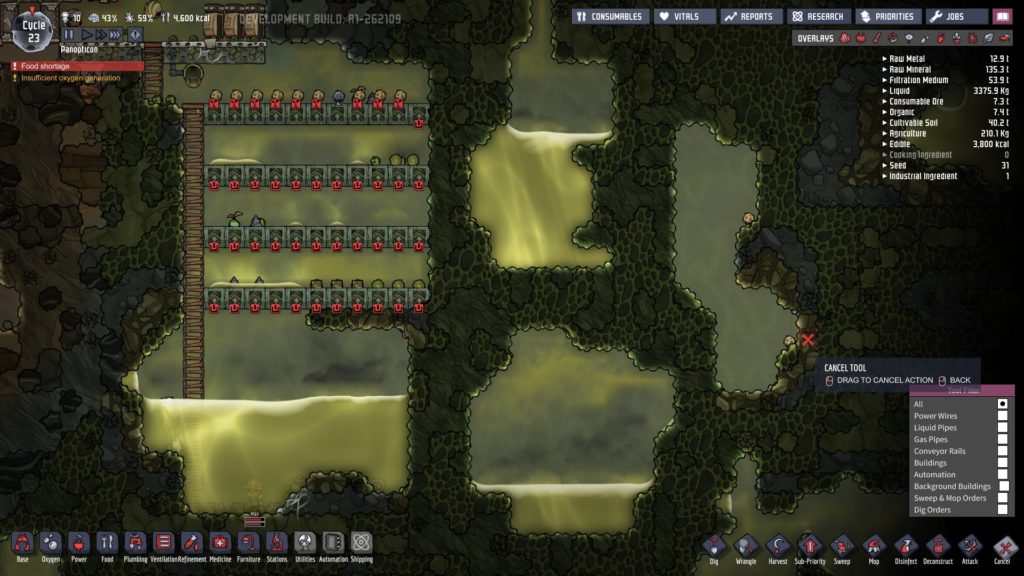

When it's all built and the liquid reservoirs are full, you "plug in" your bathroom (etc.) water outputs to your decontamination system. You bascially just build the whole thing without needing to do any of the deconstructing in method 2. The first option - filling your liquid reservoirs with germ-free polluted water from the slime biome - is cleaner and easier. Fill the tanks and then let them sit in chlorine until the water is germ-free. You can find germ-free polluted water in the slime biome.Ĭonstruct the build using toilet water, but do it in two stages. Since the germs in the polluted water in the pipes wouldn't be affected by the chlorine.įill your chlorine room tanks and pipes with germ-free polluted water. If we were to just build everything and then start the build, the germy water would still be germy when it came out the other end. (It should only require three tanks, but I'm not brave enough to trust it.) To make sure it stays in chlorine long enough, we will use four liquid reservoir tanks.
Oxygen not included disinfect water full#
Our build will use a room full of chlorine that our germy water will spend enough time in that all germs are gone when it comes out the other end. (At lest how it works at the time of writing.)Ĭhlorine kills germs in liquid reservoirsĬhlorine does not kill germs in liquid pipes The main tricky part of building this has to do with how chlorine works. But none of it is actually that difficult.

We will also need to create a vacuum and then fill that vacuum with chlorine. There is some piping that needs to be done just right and a tiny bit of automation. to Bristle Blossoms to get rid of.)įor the most part, this is a straightforward build. So that if your base's water storage is full, any liquid overflow from the bathroom is fed e.g. (To solve that, you could implement a second liquid overflow. Then, either your clean water supply overflows, or it fills up and your toilet plumbing clogs up and the toilets stop working.

In such a situation, having a bathroom loop that keeps producing more and more clean water for your water supply can actually lead to too much water. And end up with as much water as you want. However, you will eventually get the hang of both - including taming various water geysers. When first starting out, things like water and heat are big challenges. Polluted water or water as overflow is really just a matter of preference. That polluted water is fed to a thimble reed plant to get rid of it - and give us some reed fiber in the process. In this design, we use the liquid overflow for polluted water. If the liquid overflow is after the cleaning process, we get germ-free water as overflow. If the liquid overflow mechanism is before the cleaning process, we get germy, polluted water as overflow. Where to put it depends on whether we want to have a small, steady supply of water or of polluted water. Then there is the issue of where to put the liquid overflow mechanism. So we will first kill the germs in the polluted water, then run it through a water sieve If we get rid of the germs in the polluted water first, then the water sieve will produce germ-free dirt (as long as we don't use germy sand in the water sieve). Regarding the order of things: if we send the polluted water through the water sieve first, then the water sieve will produce germy dirt. Only if that isn't possible will it flow into the normal pipe. If a liquid comes to a point in a plumbing network where there is a liquid bridge and a normal pipe, the liquid will always first try to use the liquid bridge. The way liquids work in Oxygen Not Included is that liquids "prefer" liquid bridges over other pipes. Another use is to create that liquid overflow mechanism we need.

One of the uses for a Liquid Bridge is to be able to run entirely separate pipes underneath it. The Liquid Bridge has an input side (white) and an output side (green). You can deconstruct Liquid Bridges without any water spilling out (Water basically teleports from the input to the output.) Meaning: There is never any liquid in the actual bridge part of it. Something useful to know about Liquid Bridges: This is done using a bit of piping called a Liquid Bridge. We can solve this problem by including a way for excess water to be dumped out of our plumbing network. This wouldn't break the pipes, but it would cause our bathrooms to stop working since there would be no room for new polluted water in our pipes - no room to flush the toilet, basically This means that if we build a closed loop - polluted water is sent through a Water Sieve and fed straight back into our bathrooms - then the pipes will eventually fill up and clog. Toilets produce more polluted water than they use water. Toilets produce more liquid than they use Regardless of whether you include the chlorine room in your build, there is something important to remember when recycling bathroom water:


 0 kommentar(er)
0 kommentar(er)
